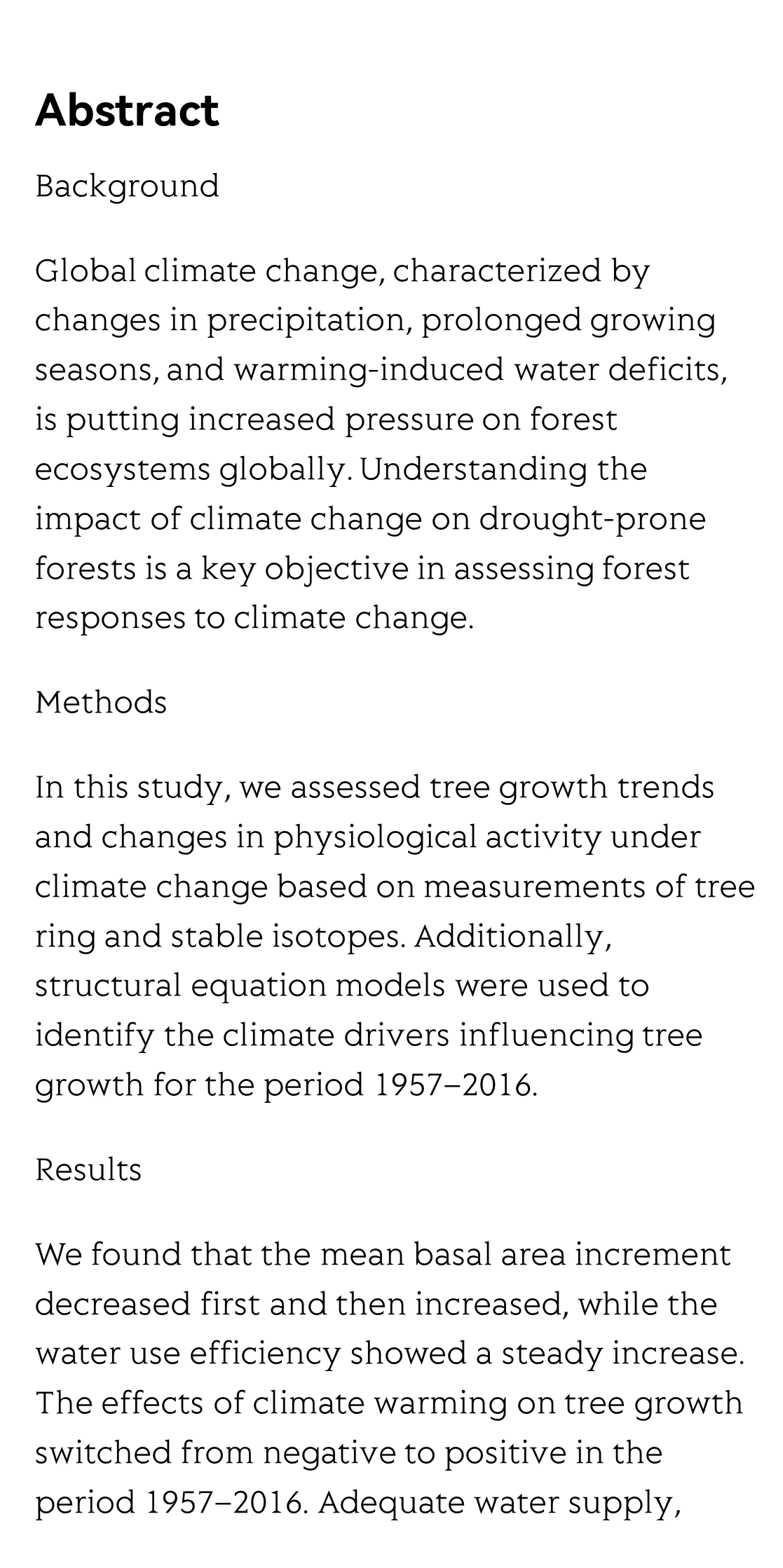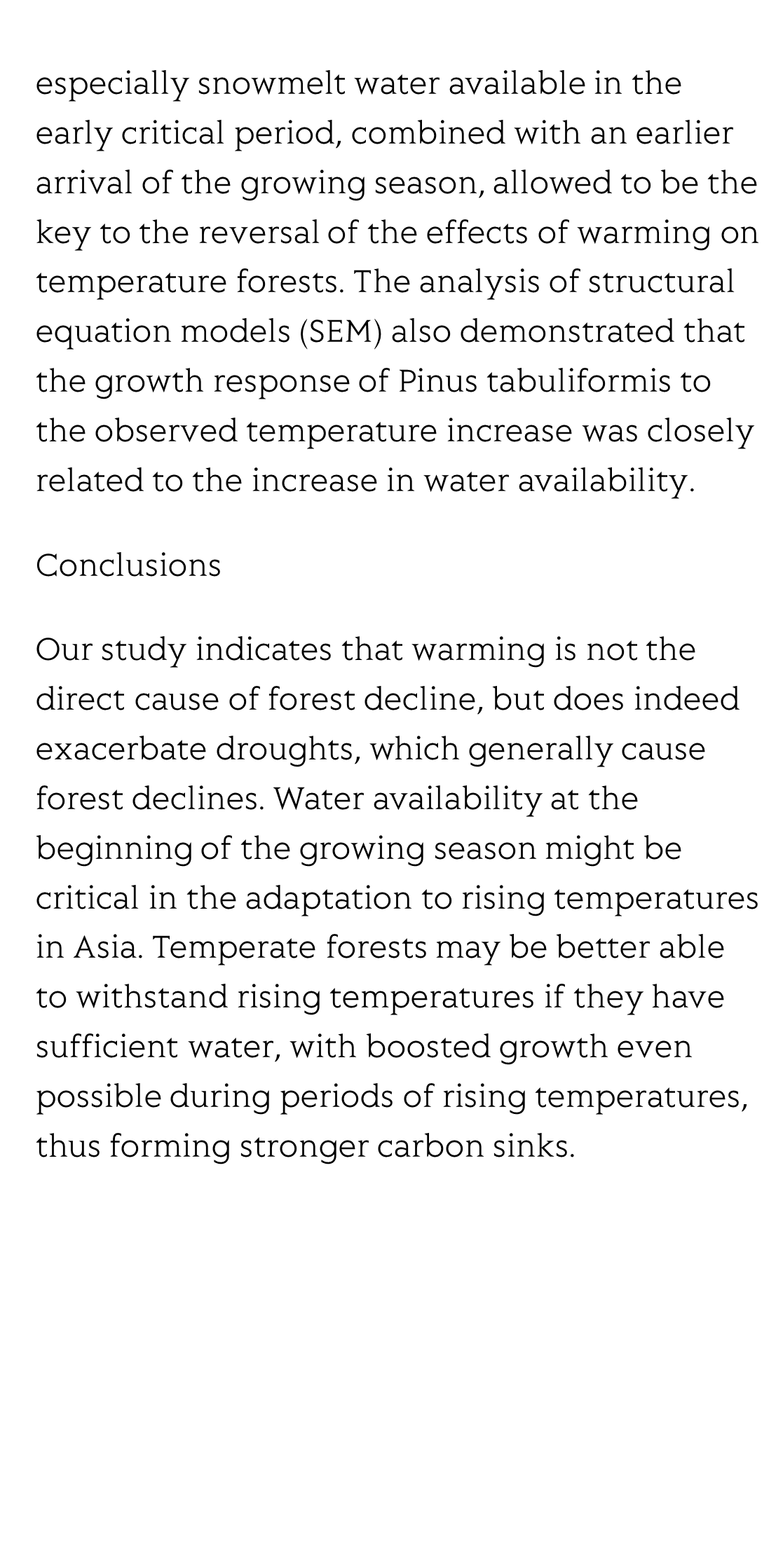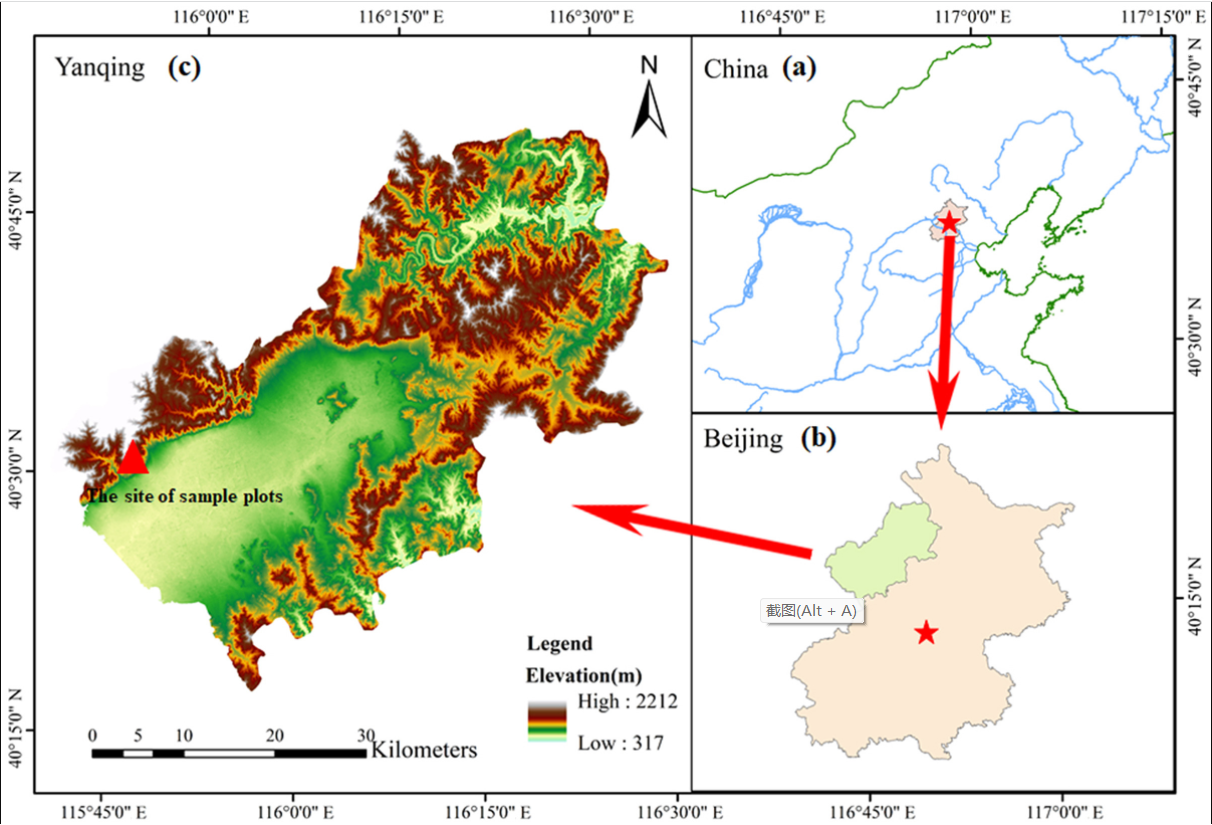(Peer-Reviewed) Variation in water supply leads to different responses of tree growth to warming
Pengfei Zheng 郑鹏飞 ¹, Dandan Wang 王丹丹 ², Guodong Jia 贾国栋 ¹, Xinxiao Yu 余新晓 ¹, Ziqiang Liu 刘自强 ³, Yusong Wang 王渝淞 ¹, Yonge Zhang 张永娥 ¹
¹ Key Laboratory of State Forestry Administration on Soil and Water Conservation, Beijing Forestry University, Beijing, 100083, China
中国 北京 北京林业大学 水土保持与荒漠化防治教育部重点实验室
² State Key Laboratory of Simulation and Regulation of Water Cycle in River Basin, China Institute of Water Resources and Hydropower Research, Beijing, 100038, China
中国 北京 中国水利水电科学研究院 流域水循环模拟与调控国家重点实验室
³ Co-Innovation Center for Sustainable Forestry in Southern China, Nanjing Forestry University, Nanjing, 210037, China
中国 南京 南京林业大学 南方现代林业协同创新中心
Abstract
Background
Global climate change, characterized by changes in precipitation, prolonged growing seasons, and warming-induced water deficits, is putting increased pressure on forest ecosystems globally. Understanding the impact of climate change on drought-prone forests is a key objective in assessing forest responses to climate change.
Methods
In this study, we assessed tree growth trends and changes in physiological activity under climate change based on measurements of tree ring and stable isotopes. Additionally, structural equation models were used to identify the climate drivers influencing tree growth for the period 1957–2016.
Results
We found that the mean basal area increment decreased first and then increased, while the water use efficiency showed a steady increase. The effects of climate warming on tree growth switched from negative to positive in the period 1957–2016. Adequate water supply, especially snowmelt water available in the early critical period, combined with an earlier arrival of the growing season, allowed to be the key to the reversal of the effects of warming on temperature forests. The analysis of structural equation models (SEM) also demonstrated that the growth response of Pinus tabuliformis to the observed temperature increase was closely related to the increase in water availability.
Conclusions
Our study indicates that warming is not the direct cause of forest decline, but does indeed exacerbate droughts, which generally cause forest declines. Water availability at the beginning of the growing season might be critical in the adaptation to rising temperatures in Asia. Temperate forests may be better able to withstand rising temperatures if they have sufficient water, with boosted growth even possible during periods of rising temperatures, thus forming stronger carbon sinks.
Flicker minimization in power-saving displays enabled by measurement of difference in flexoelectric coefficients and displacement-current in positive dielectric anisotropy liquid crystals
Junho Jung, HaYoung Jung, GyuRi Choi, HanByeol Park, Sun-Mi Park, Ki-Sun Kwon, Heui-Seok Jin, Dong-Jin Lee, Hoon Jeong, JeongKi Park, Byeong Koo Kim, Seung Hee Lee, MinSu Kim
Opto-Electronic Advances
2025-09-25
Dual-frequency angular-multiplexed fringe projection profilometry with deep learning: breaking hardware limits for ultra-high-speed 3D imaging
Wenwu Chen, Yifan Liu, Shijie Feng, Wei Yin, Jiaming Qian, Yixuan Li, Hang Zhang, Maciej Trusiak, Malgorzata Kujawinska, Qian Chen, Chao Zuo
Opto-Electronic Advances
2025-09-25







